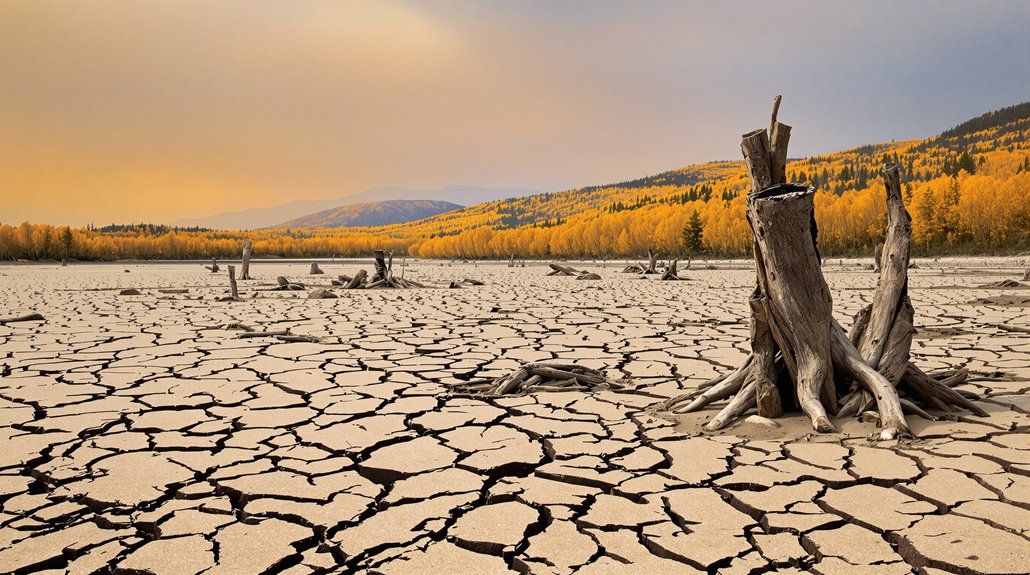As western Colorado enters the peak of summer, the region faces its most severe drought conditions in years. Nearly 20% of the Intermountain West is experiencing extreme drought, with western Colorado hit particularly hard. The U.S. Drought Monitor now shows Exceptional Drought (D4), the highest category, appearing in the area west of the Continental Divide.
August typically brings monsoon rains that provide relief to the Western Slope. However, 2025 has been unusually dry and hot. While southeastern Colorado received substantial moisture, western regions missed the beneficial spring precipitation that improved drought conditions in eastern parts of the state.
Western Colorado’s parched landscape awaits monsoon relief that hasn’t materialized, while eastern regions flourish from spring’s generous moisture.
Western Colorado relies heavily on snowpack to fill rivers and reservoirs. Despite promising early snowfalls, subsequent months of extreme dryness have led to declining water reserves. The lack of late spring snow has reduced stream and river flows, leaving many waterways at critically low levels. Current statewide snowpack measures show levels at only 44% of average, highlighting the severity of the water shortage.
The drought has worsened since May, when the region experienced very warm days with limited rainfall. Prolonged higher-than-average temperatures have intensified soil moisture loss across western Colorado, creating dangerous conditions for vegetation.
The environmental impact is becoming increasingly visible. Vegetation vigor has decreased, while wildfire risk has surged. Forests are more susceptible to disease and pests. Climate change is accelerating extreme heat conditions throughout the region, worsening the drought’s intensity. Aquatic habitats, especially in smaller tributaries, face serious threats due to limited streamflow.
Agricultural communities are feeling the economic strain. Farmers and ranchers report reduced harvests and stressed rangelands. Many face increased expenses for water and feed. Local officials have triggered emergency water management measures in several communities due to poor water quality and limited supply. Similar to Indigenous communities in Canada facing climate vulnerabilities, these farmers experience urgent climate threats that disproportionately affect marginalized populations.
The drought is also affecting tourism, which relies on rivers, lakes, and scenic vistas. Many attractions are compromised by water scarcity and wildfire threats.
Climatologists predict conditions will likely worsen through the remainder of August. With 29.87% of the lower 48 United States currently in drought, Colorado remains among the most severely impacted areas, prompting calls for increased federal drought relief funding.
References
- https://www.cpr.org/2025/08/06/intermountain-west-colorado-drought-will-likely-get-worse/
- https://climate.colostate.edu/blog/index.php/2025/05/15/the-changing-drought-landscape-after-a-big-storm-and-may-heat/
- https://www.drought.gov/current-conditions
- https://www.ncei.noaa.gov/access/monitoring/monthly-report/drought/202505
- https://www.drought.gov/states/colorado








